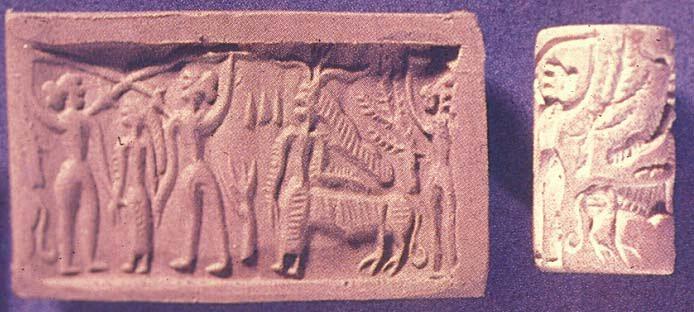January 15th, 2017
"The Harappans had a goddess of war connected with the tiger, another large feline that was once native to the Indus Valley. On a cylinder seal from Kalibangan (Image 1, 2), a goddess in long skirt and plaited hair holds the hands of two warriors in the process of spearing each other. Next to this scene, the same deity is shown with an elaborate horn crown and the back part of a tiger as a continuation of her body. The hair of the two warriors is arranged into the double bun' or chignon at the back of the head, characteristic of Late Early Dynastic Mesopotamian kings on the warpath. As in the later South Asian tradition, this tiger-riding goddess of war apparently received water buffaloes in sacrifice. There are several Harappan images of a man who spears a water buffalo while placing one of his feet on the head of the beast. This pose came to signify 'victory' in Mesopotamian glyptic art during the reign of Sargon the Great (2334-2279 BCE)."
Asko Parpola, The Harappan Unicorn in Eurasian and South Asian perspectives, p. 158.






